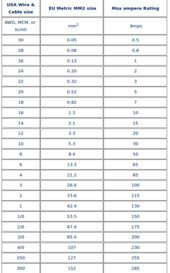I have a 3 panel, 2 battery 12v system I did on the cheap to light up some camping cabins. Panels in parallel. Extension cords were used to juice up cabins with 12v lights and charge ports. Everything works great. Then I get the idea to add a small inverter (300watts) to each cabin. Any load, even an 75 watt bulb crashes the inverters. I guess it's because they are too far from the batteries or maybe wire size. The run from my solar shack to the cabin #1 is 40 feet, then another off that one that's 20ft long to cabin 2. I feed directly from batteries not the load tap on the charge controller.
Is there anything I can do to deliver more juice to the cabin inverters by beefing up the lines or would I be better just running AC lines from my 3000 watt inverter in the solar shack (It will run a table saw). But will I lose power there too. Just want enough AC for people to charge laptops and run a fan. Thanks!
Is there anything I can do to deliver more juice to the cabin inverters by beefing up the lines or would I be better just running AC lines from my 3000 watt inverter in the solar shack (It will run a table saw). But will I lose power there too. Just want enough AC for people to charge laptops and run a fan. Thanks!





